Tackling Plagiarism Risks in AI Writing
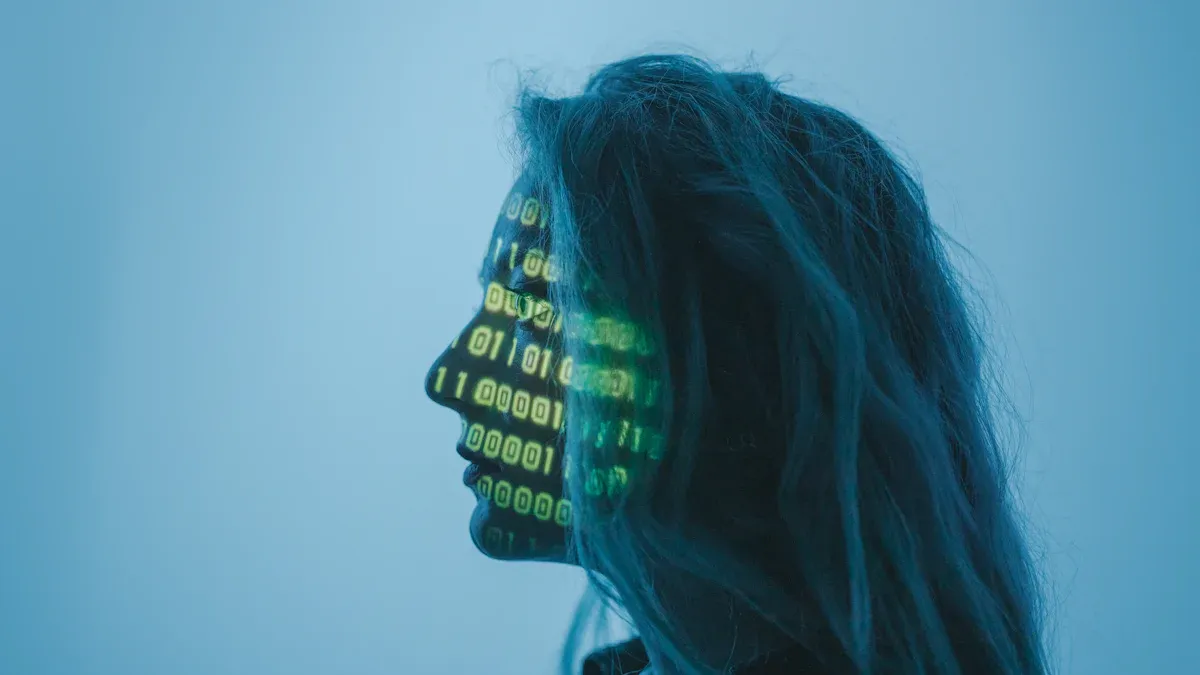
You face new problems as AI writing tools are used more. In the United States, 78% of groups now use AI writing. Also, 85% want to spend more on it by 2025.
Plagiarism risks from AI writing have increased significantly. Schools and colleges now find up to 39% of cases involving AI-generated content. When you use AI, you should be mindful of originality and ethical practices. Ignoring plagiarism risks could damage your reputation and cause people to lose trust in your work. What if your AI writing led to lost opportunities or trouble at school?
Key Takeaways
Plagiarism is when you use someone’s words or ideas and do not give them credit. AI writing can make this problem worse if you are not careful. AI tools may copy or repeat things that already exist. Always check your work to make sure it is original and give credit when needed. Plagiarism detection tools have trouble finding AI-generated text. So, you should follow clear rules and be honest. You also need to check your own work. Use AI the right way by giving clear instructions. Change the AI’s words into your own words. Make sure to cite your sources the right way. Schools and groups do well when they teach about AI ethics. They also need to update their rules and talk openly about using AI.
Plagiarism Risks
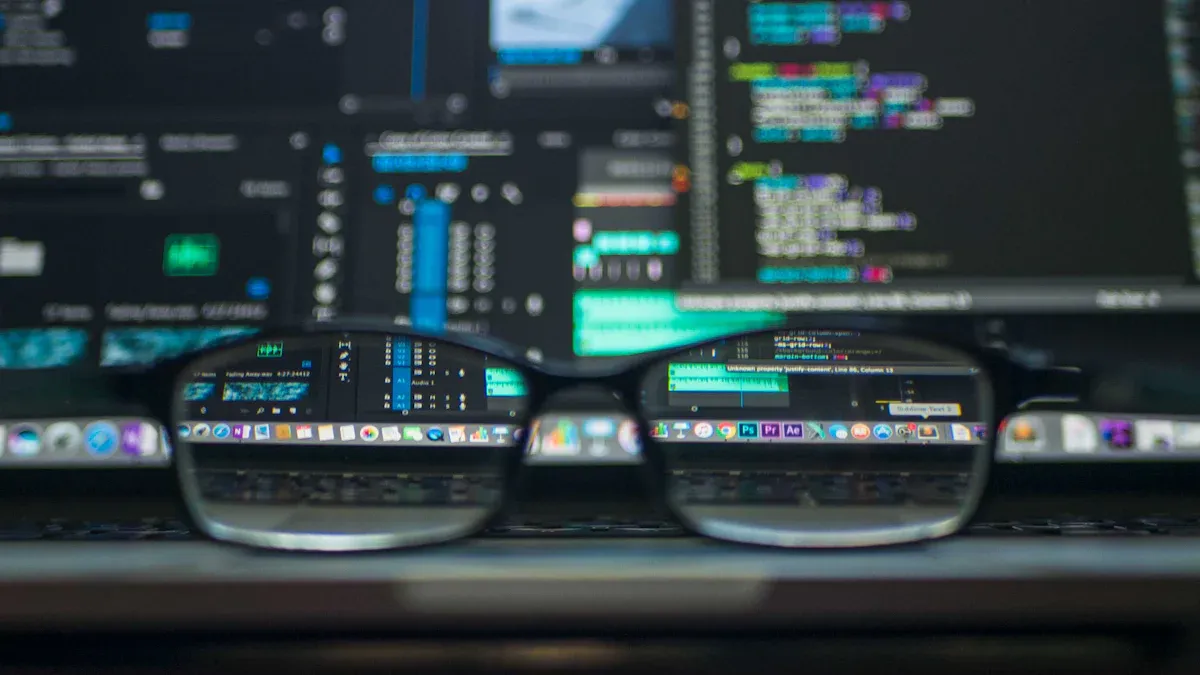
What Is Plagiarism?
You have to know what plagiarism is to avoid it. Plagiarism is when you use someone else’s words, ideas, or pictures and say they are yours. This can happen if you copy, change words without giving credit, or use your own old work without saying so. The American Psychological Association (APA) says plagiarism is wrong, even if you do not mean to do it. You always need to name the real author, even if you only use their ideas.
Description | |
|---|---|
Direct Plagiarism | Copying someone else's work word-for-word without attribution or quotation marks. |
Paraphrasing Plagiarism | Rewriting ideas in your own words without crediting the original source. |
Accidental Plagiarism | Forgetting to cite sources or unintentionally paraphrasing without credit. |
Self-Plagiarism | Reusing your own previous work without proper citation. |
How AI Generates Content
AI writing tools use special models called transformers. These models, like DistilBERT, learn from lots of text online. They use self-attention to figure out how words fit together. When you ask AI to write, it guesses the next word using what it knows. Sometimes, this can cause plagiarism risks. The AI might copy phrases or ideas from its training data without saying where they came from.
Note: AI-made content can sometimes copy or sound like other work. For example:
A scholar almost won a big prize with an AI-written paper, which made people worry about honesty.
The New York Times sued OpenAI because ChatGPT copied parts of Times articles.
CNET used AI and ended up with plagiarism and mistakes, which hurt its reputation.
Common Misconceptions
Some people think AI writing is always new or hard to spot. This is not true. Studies show even experts have trouble telling if text is from AI or a person. For example, teachers and students often cannot tell if an essay is written by AI. Detection rates are usually under 70%, and sometimes even lower.
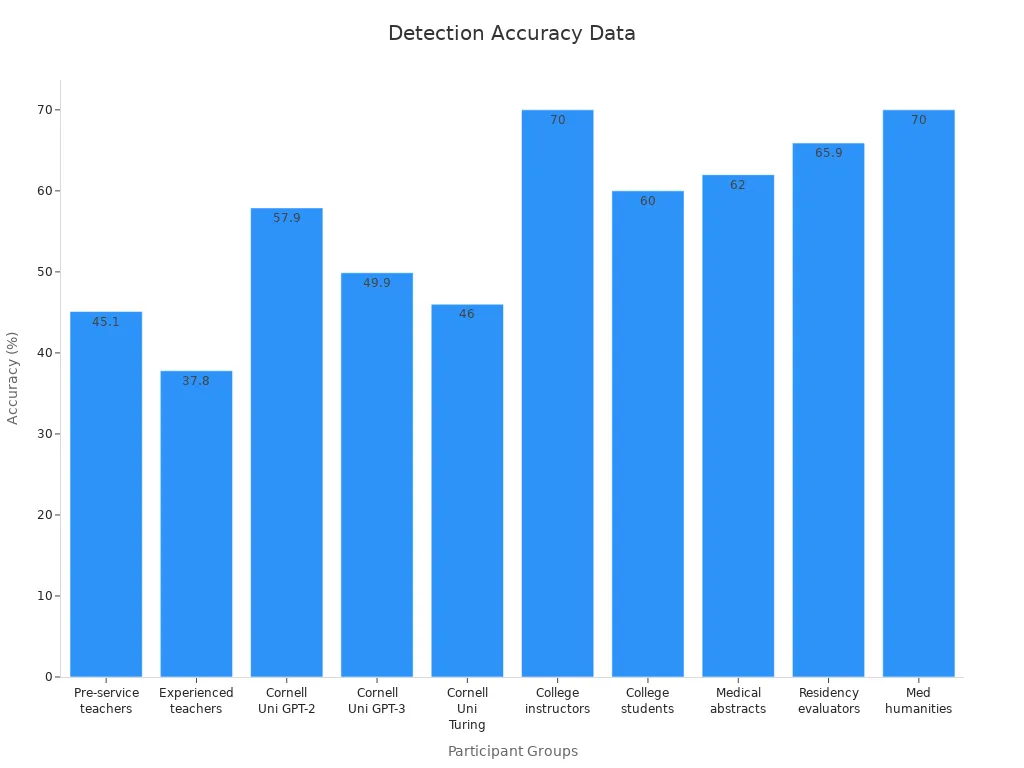
You should not think AI writing is always safe from plagiarism. AI can copy or closely change old material, and tools may not always find it. If you use AI, you must check for originality and give credit to avoid problems.
Challenges
Detection Issues
It is hard to find plagiarism in AI writing. Tools that check for plagiarism often cannot tell if text is from AI or a person. These tools work better with human writing and get over 80% right. But with AI writing, they are only right about half the time. Mistakes happen more when people change AI text or rewrite it. If you make the writing sound like a kid, the tools miss even more. Sometimes, these tools say good writing is AI because it is not simple.
When people edit AI text, tools only find 30% of it. If a computer changes the words, tools find just 15%.
No tool is perfect. Turnitin is one of the best, but it is only right 81% of the time.
Some tools, like GPT Zero, have said real student work was made by AI. This causes problems and makes students worry.
Note: Many colleges now tell students not to trust these tools alone. They also worry about privacy because student work goes to other companies.
Originality Concerns
AI does not always make new work. Sometimes, it repeats ideas or copies phrases from what it learned. This makes it tough to check if work is original and raises plagiarism risks. Even the best tools miss some AI writing or say human work is AI.
Metric | Originality.ai | Copyleaks | GPTZero | DetectGPT |
|---|---|---|---|---|
False Positive Rate (Human essays flagged as AI) | 2.0% | 0% | 2.0% | 18% |
False Negative Rate (AI essays flagged as Human) | 2.0% | 6.2% | 10.2% | 42.8% |
True Positive Rate (TPR) | 98% | 94% | 89.8% | 57.2% |
F1 Score | 98% | ~96.9% | ~93.6% | ~65.3% |
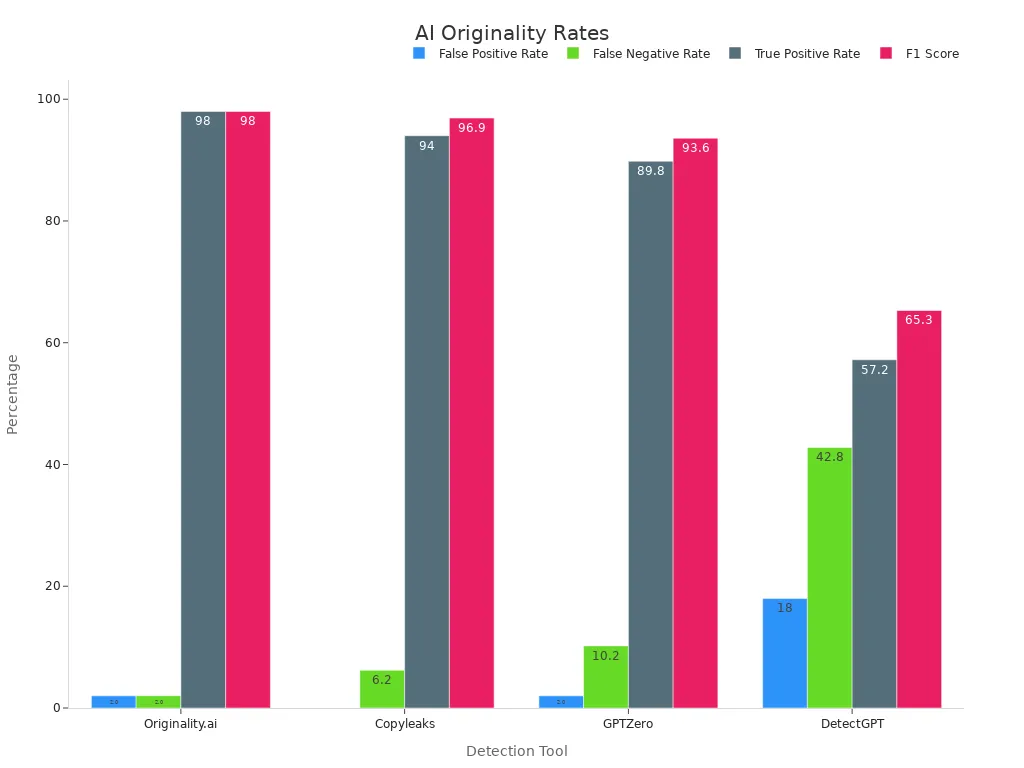
A new survey found that 63.2% of students think AI essays are better than their own. This makes some students want to use only AI, but it can hurt their originality.
Ethical and Legal Factors
You need to think about the rules and laws for AI writing. Copyright laws do not always say who owns work made by AI. Different countries have different rules, so it can be confusing to know who gets credit. The prompts you give to AI matter when deciding who the real author is.
Some experts want new copyright rules for AI writing. They also want ways to track who did what.
Licensing and royalty systems could help give fair credit to everyone.
Open access licenses, like Creative Commons, let people share AI work and respect rights.
Plagiarism risks get worse when you do not know who owns the work or how to give credit. You should use AI carefully and always check the rules where you live.
Prevention
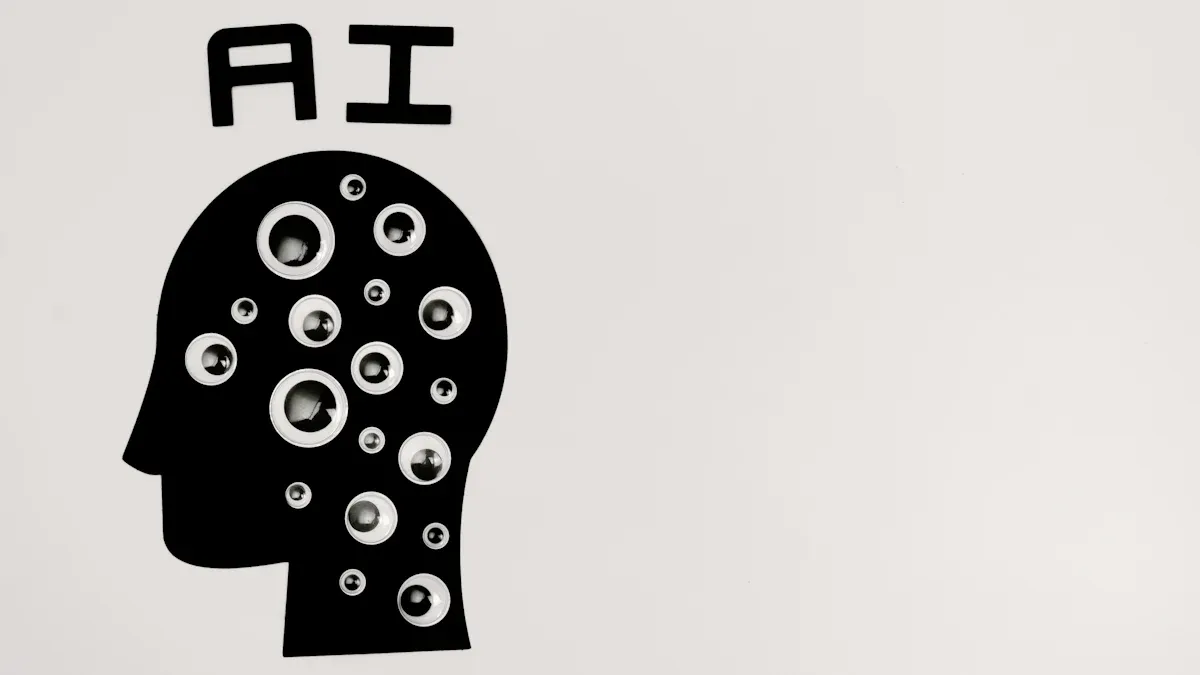
Guidelines
You can prevent problems with AI writing by following clear guidelines. Start by setting rules for how to use AI tools. Make sure everyone knows when and how to use these tools in your work. Schools and organizations that teach about ethical AI use see better results. Workshops and online lessons help you understand why honesty matters and how to avoid copying.
Use clear policies that explain what counts as cheating or misuse of AI.
Break big tasks into smaller steps. This makes it harder to use AI for the whole job and helps you show your own progress.
Mix up how you show your work. Try written reports, oral presentations, and group projects. This makes it easier for teachers to spot work that does not match your skills.
Use AI-detection tools, but always check the results yourself. No tool is perfect.
Assign tasks that ask for your own thoughts and reflections. These are harder for AI to fake.
Tip: When you work with others or present your ideas out loud, it becomes much harder to misuse AI. Real-time discussions and group work help keep things honest.
Teaching research and citation skills also helps you create original work. When you know how to find and use sources, you rely less on AI to do the work for you. Frequent, small assignments let teachers track your progress and spot problems early. Schools that combine these steps see fewer cases of cheating and better learning.
Prompt Design
How you ask AI to help matters a lot. Good prompt design can lower the risk of copying and improve the quality of your work. Experts suggest breaking big tasks into smaller parts. Give the AI clear instructions about what you want, how long it should be, and what style to use.
Be specific. Tell the AI exactly what you need.
Give context. Explain the topic, the goal, and any limits.
Set the format. Say if you want a list, a summary, or a report.
Choose the tone and style. Match your audience or purpose.
Add examples. Show what a good answer looks like.
Use step-by-step prompts. Guide the AI through each part of the task.
When you use detailed prompts, the AI gives more creative and useful answers. Studies show that complex prompts help the AI come up with new ideas instead of repeating old ones. If you work with the AI, giving feedback and refining your prompts, you get better and more original results.
Note: Protect your privacy by not sharing real names or sensitive data in your prompts. Use fake names or general terms when needed.
Rewriting and Attribution
You should never use AI output as your final work. Always review, rewrite, and add your own ideas. This helps you avoid accidental copying and keeps your work original. When you use information from other sources, give credit to the real authors. Use proper citation styles and include in-text citations or quotes when needed.
Paraphrase carefully. Change the words and structure, but keep the meaning.
Check your work with plagiarism tools. Fix any parts that look too close to the source.
Use reliable sources and read them yourself before citing.
Avoid adding citations just to boost your own work or to please others.
Respect all contributors, even if they do not meet full authorship rules.
Proper attribution builds trust and shows respect for others' work. Journals and schools have clear rules for citation and authorship. Following these rules protects your reputation and helps others find your sources. When you rewrite and cite well, you show your own thinking and avoid the risks of copying.
AI Literacy
Learning how AI works helps you use it responsibly. AI literacy means knowing what AI can and cannot do, and understanding its limits. Schools that teach about AI, its risks, and its ethical use see better results. You learn to spot when AI is helpful and when it might cause problems.
Take part in lessons or workshops about AI and academic honesty.
Practice using AI tools with guidance from teachers.
Learn how to check your own work for originality.
Work with teachers to set rules for AI use in your class.
Try assignments that ask for your own ideas, like oral defenses or personal reflections.
A case study showed that when students used AI tools with clear rules and support, they wrote more original and ethical work. These students learned to think for themselves, reflect on their choices, and use AI as a helper, not a replacement. When you understand AI, you can use it to improve your work without falling into plagiarism.
Institutional Approaches
Policy Updates
Strong rules help stop plagiarism from AI writing. Many colleges now have clear rules for using AI tools. These rules say what is okay and what is not. Some schools, like the UK Russell Group and Monash University, changed how they grade. They look at your process and ideas, not just your answers. Stanford and MIT use both computers and people to check for cheating.
Change assignments so you must show your own ideas.
Update rules often because AI tools change fast.
Learn when to give credit to AI and how to say you used it.
Teachers must talk about AI rules in every class.
If you use AI without saying so, it breaks school rules. You must always tell if you got help from AI. This keeps things fair for everyone.
Transparency
Being open builds trust in your work. Schools and publishers want you to say if you used AI. Elsevier, for example, asks writers to explain how they used AI. This helps everyone know what AI did and keeps things honest.
Transparency Measure | Description | Impact |
|---|---|---|
You must say if you used AI in your work. | Stops AI from doing the most important jobs. | |
AI Checker Tools | These tools find writing made by AI. | Makes checking faster and better. |
Human Oversight | Teachers look at checker results to be fair. | Lowers mistakes and wrong blame. |
Some schools use AI to help with peer review. This makes checking work faster and more correct. But people still need to check to avoid errors.
Training
Training helps you and teachers use AI the right way. Many colleges teach AI ethics in simple lessons. In Australia, over 200 schools have a program for teachers about AI and honesty. After this, teachers feel ready to help students.
Go to workshops or online classes about AI rules.
Learn to check if your work is original.
Work with teachers who know safe ways to use AI.
When you learn about AI and its risks, you make smarter choices. Schools that teach about AI see more honest work and less cheating.
You help stop AI plagiarism by making good choices. Using many smart steps works best. Here are some facts:
Cheating with AI in UK colleges is now three times higher, but old-style copying is less common.
AI-made work can get past checks almost all the time—94% of the time.
More than 27% of colleges have trouble telling if someone misused AI.
You should follow simple rules, learn about AI, and be open about your work. Schools and businesses that teach, update rules, and check work do better. Using AI the right way keeps your work honest and builds trust.
Call-to-Action Measure | Real-World Impact |
|---|---|
More trust in health and money jobs | |
Adaptive Risk Management | New ideas and fair rules work together |
Fairness Constraints | Less unfairness in hiring and court cases |
Keep learning, use AI carefully, and help make a world where honesty is important.
FAQ
What should you do if AI-generated content matches another source?
You should review the content and rewrite any matching parts. Always check with a plagiarism tool. Give credit to the original author if you use their ideas or words.
Can you use AI tools for school assignments?
You can use AI tools if your school allows it. Always follow your teacher’s rules. Tell your teacher if you used AI and explain how it helped you.
How do you cite AI-generated text?
You should follow your school or publisher’s citation style. For example, in APA, you can write:
OpenAI. (2024). ChatGPT (June 2024 version) [Large language model]. https://chat.openai.com/
Does using AI always count as cheating?
No, using AI does not always mean you are cheating. You must use AI as a helper, not as the only author. Always show your own ideas and give credit when needed.
See Also
Comparing Writesonic AI And QuickCreator For Content Creation
Complete Guide To Achieving SEO Success Using Perplexity AI
Exploring The Design And Technology Behind Large Language Models

